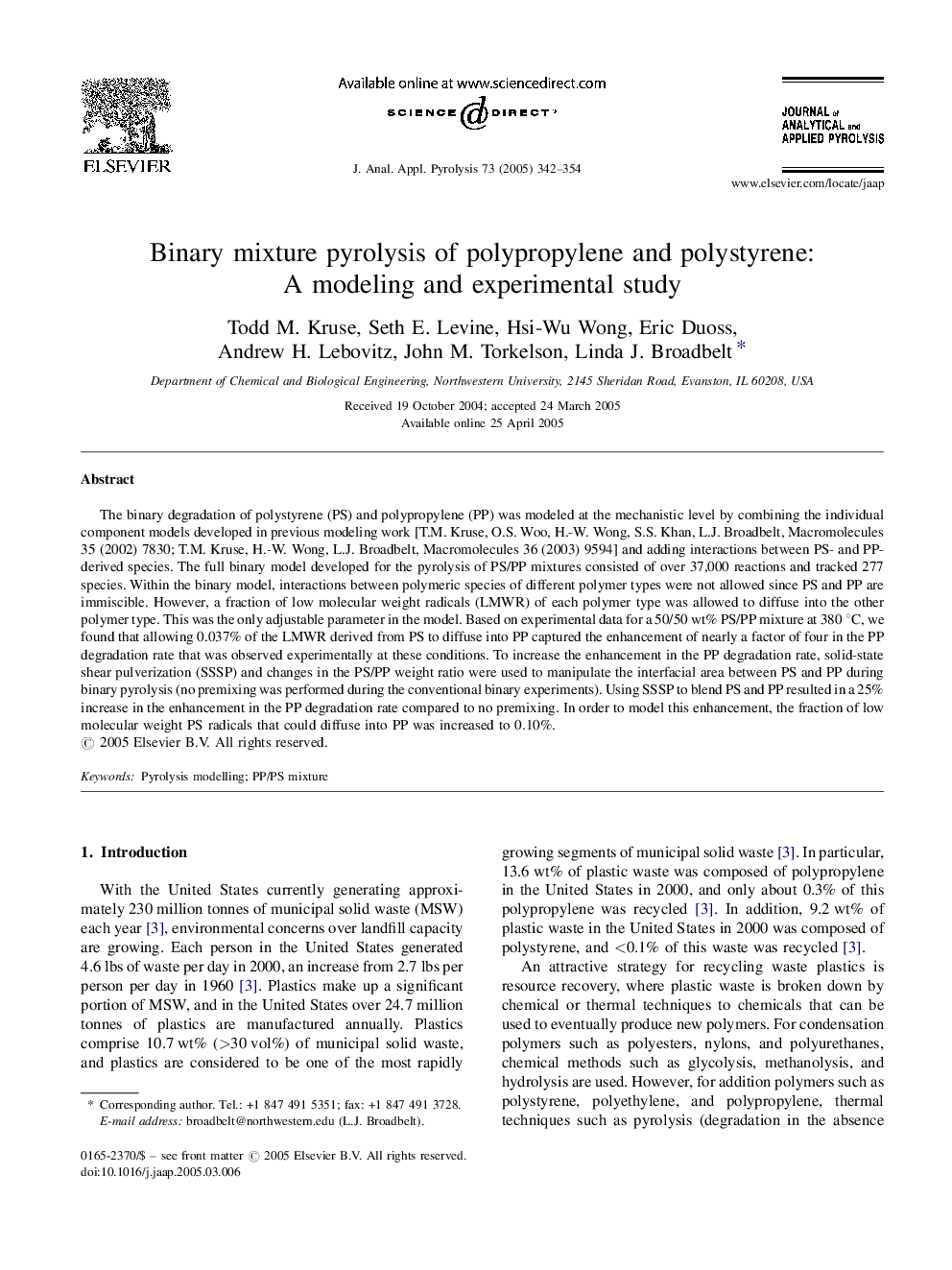| کد مقاله | کد نشریه | سال انتشار | مقاله انگلیسی | نسخه تمام متن |
|---|---|---|---|---|
| 10547560 | 964687 | 2005 | 13 صفحه PDF | دانلود رایگان |
عنوان انگلیسی مقاله ISI
Binary mixture pyrolysis of polypropylene and polystyrene: A modeling and experimental study
دانلود مقاله + سفارش ترجمه
دانلود مقاله ISI انگلیسی
رایگان برای ایرانیان
کلمات کلیدی
موضوعات مرتبط
مهندسی و علوم پایه
شیمی
شیمی آنالیزی یا شیمی تجزیه
پیش نمایش صفحه اول مقاله

چکیده انگلیسی
The binary degradation of polystyrene (PS) and polypropylene (PP) was modeled at the mechanistic level by combining the individual component models developed in previous modeling work [T.M. Kruse, O.S. Woo, H.-W. Wong, S.S. Khan, L.J. Broadbelt, Macromolecules 35 (2002) 7830; T.M. Kruse, H.-W. Wong, L.J. Broadbelt, Macromolecules 36 (2003) 9594] and adding interactions between PS- and PP-derived species. The full binary model developed for the pyrolysis of PS/PP mixtures consisted of over 37,000 reactions and tracked 277 species. Within the binary model, interactions between polymeric species of different polymer types were not allowed since PS and PP are immiscible. However, a fraction of low molecular weight radicals (LMWR) of each polymer type was allowed to diffuse into the other polymer type. This was the only adjustable parameter in the model. Based on experimental data for a 50/50 wt% PS/PP mixture at 380 °C, we found that allowing 0.037% of the LMWR derived from PS to diffuse into PP captured the enhancement of nearly a factor of four in the PP degradation rate that was observed experimentally at these conditions. To increase the enhancement in the PP degradation rate, solid-state shear pulverization (SSSP) and changes in the PS/PP weight ratio were used to manipulate the interfacial area between PS and PP during binary pyrolysis (no premixing was performed during the conventional binary experiments). Using SSSP to blend PS and PP resulted in a 25% increase in the enhancement in the PP degradation rate compared to no premixing. In order to model this enhancement, the fraction of low molecular weight PS radicals that could diffuse into PP was increased to 0.10%.
ناشر
Database: Elsevier - ScienceDirect (ساینس دایرکت)
Journal: Journal of Analytical and Applied Pyrolysis - Volume 73, Issue 2, June 2005, Pages 342-354
Journal: Journal of Analytical and Applied Pyrolysis - Volume 73, Issue 2, June 2005, Pages 342-354
نویسندگان
Todd M. Kruse, Seth E. Levine, Hsi-Wu Wong, Eric Duoss, Andrew H. Lebovitz, John M. Torkelson, Linda J. Broadbelt,